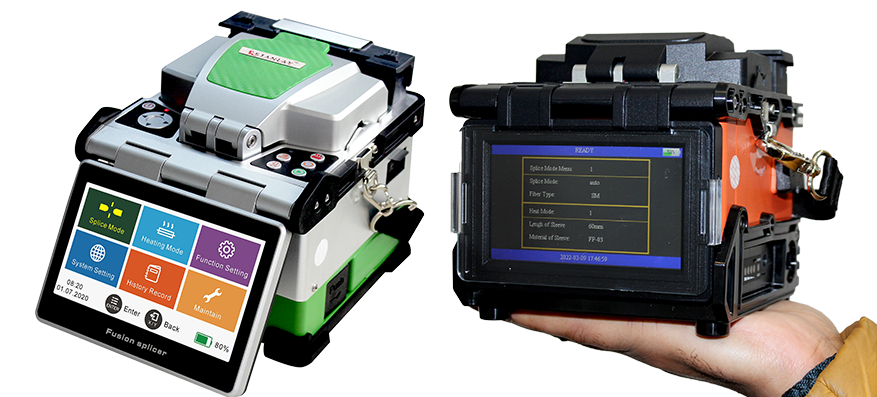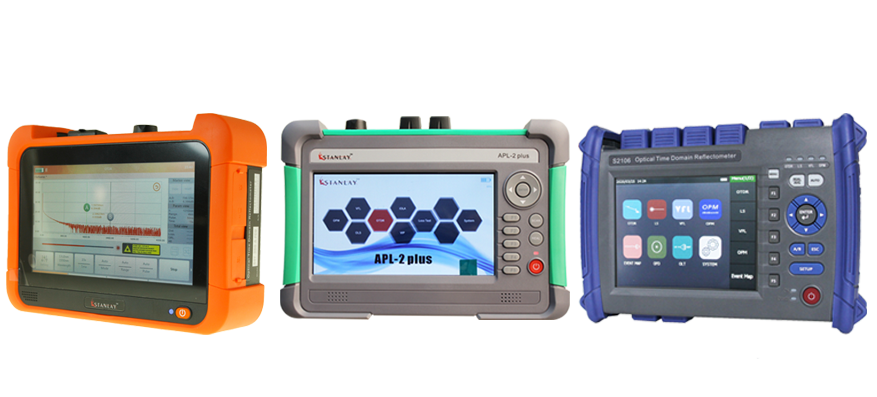What is the cost of robotic vision technology for industries
Wiki Article
All You Required to Learn About Robotic Vision and Its Applications in Advanced Optical Measurement Solutions
Robotic vision stands for a considerable development in the junction of computer system vision, fabricated intelligence, and artificial intelligence. This technology enhances the accuracy of optical measurement systems, enabling real-time information analysis and improved quality control. Its effect covers numerous industries, from manufacturing to health care. Nonetheless, the advancing landscape of robotic vision questions concerning future capacities and applications (fibre testing equipment). What developments exist in advance in this transformative field?Comprehending Robotic Vision: Trick Concepts and Technologies
Robotic vision encompasses the innovations and methods that enable equipments to translate and recognize visual information from their atmosphere. This area incorporates elements of computer vision, artificial knowledge, and equipment discovering to assist in automated decision-making based upon visual data. Key concepts consist of picture handling, which involves the improvement and analysis of pictures to extract significant attributes, and things recognition, which enables machines to recognize and categorize things within a scene.
The Combination of Robotic Vision With Optical Dimension Equipments
As industries significantly require precision and efficiency, the assimilation of robot vision with optical measurement systems has actually become a transformative method. This synergy enables robots to regard and analyze their surroundings, improving the capability of optical measurement systems to examine and assess things with unrivaled precision. By furnishing optical sensing units with innovative imaging technologies, robot vision makes it possible for real-time information collection and handling, promoting instant modifications to measurement criteria.The combination empowers automated systems to find variants in dimensions, surface high quality, and placement, which are vital in top quality control processes. Boosted algorithms, such as artificial intelligence, additional enhance this integration by enhancing the systems' ability to adjust to different settings and situations. The assimilation not only enhances dimension procedures yet also reduces mistakes, guaranteeing that items fulfill stringent sector criteria, thus solidifying the duty of robot vision in the future of optical dimension systems.
Applications of Robotic Vision in Production
In modern manufacturing settings, making use of vision systems has actually changed production processes by making it possible for devices to perform jobs with remarkable precision and speed. Robotic vision systems are progressively used for quality assurance, where they examine items for issues and assurance adherence to requirements. These systems utilize video cameras and advanced algorithms to analyze items in real-time, significantly lowering the risk of human mistake.Furthermore, robotic vision assists in automation in setting up lines, enabling robotics to precisely identify components and assemble them with very little downtime. This technology additionally boosts supply administration, as vision systems can keep an eye on supply degrees and detect disparities, ensuring a seamless supply chain.
Robotic vision aids in the execution of smart manufacturing facilities, where information from vision systems can be integrated with other modern technologies to enhance operations (optical measurement system). Overall, the applications of robotic vision in producing demonstrate its important role in enhancing effectiveness, high quality, and performance throughout various markets
Robotic Vision in Health Care: Changing Client Treatment

In recovery, robot vision aids in keeping an eye on individual progression and customizing therapy sessions to specific demands. It supports physician by automating jobs such as data collection and client tracking, permitting for even more time to focus on straight individual interaction. Furthermore, robot vision enhances telemedicine by making it possible for remote diagnosis and virtual consultations, bridging the void in between clients and medical care suppliers. Overall, the application of robot vision in health care is revolutionizing patient treatment, bring about boosted end results, efficiency, and client complete satisfaction.
Future Patterns and Developments in Robotic Vision Technology
The fast advancement of robotic vision innovation promises to better boost its applications across various industries, including healthcare. Future fads suggest a considerable shift towards integrating expert system and device learning, allowing systems to learn from large datasets and boost accuracy gradually. Enhanced sensor modern technologies and deep knowing formulas are anticipated to improve things recognition capabilities, enabling robotics to analyze complicated atmospheres much more successfully.
In addition, the combination of enhanced truth (AR) with robotic vision will likely change just how robotics help in operations and diagnostics. This harmony will promote real-time data visualization, boosting decision-making processes. Additionally, miniaturization of parts will certainly result in even more small and versatile robotic vision systems suitable for a range of tasks. As these advancements unravel, industries will witness raised automation and efficiency, strengthening robot vision as a cornerstone of innovative technological solutions.
Often Asked Concerns
What Are the Key Elements of a Robotic Vision System?
The main elements of a robotic vision system include electronic cameras for picture capture, cpus for information evaluation, formulas for analysis, and actuators for activity. Together, these elements allow robotics to view and interact with their atmosphere properly.Exactly How Does Robotic Vision Improve Precision in Measurements?
Robotic vision improves dimension precision by using sophisticated imaging modern technologies, allowing precise things detection and spatial analysis. This ability decreases human mistake, increases repeatability, and enables for real-time changes, eventually enhancing total measurement integrity and performance.What Industries Advantage The Majority Of From Robotic Vision Innovation?
Numerous markets profit significantly from robot vision modern technology, consisting of production, health care, webpage agriculture, and logistics. These fields use enhanced precision, performance, and automation, bring about boosted productivity and decreased functional prices in their corresponding processes.Can Robotic Vision Equipments Work in Low-Light Conditions?
Robotic vision systems can indeed operate in low-light problems, utilizing sophisticated sensors and algorithms to improve image clearness. This capacity permits them to execute successfully in various atmospheres, including commercial and surveillance applications, despite marginal illumination.What Are the Prices Connected With Carrying Out Robotic Vision?
The prices related to executing robot vision vary substantially, affected by components such as cams, software, and combination. Added expenditures include upkeep, training employees, and find out possible upgrades to existing systems, which can collect in time.Report this wiki page